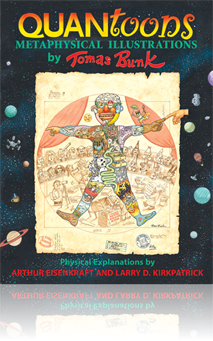All Resources
Book Chapter
The magnetic force is strange and does not exist for neutral particles—only for charged particles, if those particles are moving. The direction of the force isn’t toward the magnetic field or away from the field but “sideways.” This magneti...
Book Chapter
This chapter presents an example of a classic physics problem known as Atwood’s machine. In the lab it serves as a means of achieving a constant acceleration of any value less than g. Can you suggest a means of achieving a constant acceleration gr...
Book Chapter
At the XXIV International Physics Olympiad, held in Williamsburg, Virginia, students from 41 countries spent a day investigating the physics of amusement park rides. This article features a design challenge with a traditional physics problem descri...
Book Chapter
Stop on red, go on green . . .
When you're driving down a road and you see a yellow light, don’t you wonder when the light will turn red? As you drive down the road at a certain speed, the light may turn from green to yellow. A decision must be made to keep going or to come to a...
Book Chapter
This chapter is based on one of the theoretical problems given at the XXIV International Physics Olympiad. It is an actual application of physics to a real-world situation based on Gauss’s law—one of the most fundamental laws of electricity and...
Book Chapter
How can someone levitate an object? Magicians do it all the time. Can physicists do it as well? The easiest technique is to attach a string to the object and secure the string to the ceiling. The weight of the object is balanced by the tension in t...
Book Chapter
“It’s done with mirrors.” Whether we attend magic shows or ride the “Haunted Mansion,” we are often surprised and pleased by clever manipulations of images. This chapter looks at the image produced by a concave mirror filled with water. ...
Book Chapter
Supposedly young people are first introduced to waves while attending or watching sports events. These stadium waves can provide some useful insights into the most counterintuitive property of waves—the wave moves, but the medium does not. This cha...
Book Chapter
The motion of simple pendulums has played an interesting role in physics and technology. The simplest pendulum to study would probably be a compact mass attached to a long string. Physicists call this “the simple pendulum.” In this chapter, we st...
Book Chapter
For those of us who grew up with conventional electromagnets, it is very strange to see an electromagnet that is not connected to an external power source. But that is what happens with a superconducting magnet. After a current has been established i...
Book Chapter
It seems almost counterintuitive that wet air should be less dense than dry air and float in the sky. But the beauty of the cirrus and cumulus attest to this as we gaze at the myriad shapes and forms above us. Cloud formation reveals to us properties...
Book Chapter
Medical questions were very important during the Skylab mission from May 1973 until February 1974. At the most basic level the scientists wanted to know if the astronauts would lose weight during prolonged stays in space. This chapter begins by tak...
Book Chapter
In what now seems like physics folklore, the young patent clerk Albert Einstein proposed that light behaves like a particle—known as a photon—and that each photon has an energy that depends on its frequency. More precisely, Einstein attributed an...
Book Chapter
Although Isaac Newton probably never bowled a perfect 300 game, his physics can be used to analyze the sport of bowling. The collision of the ball with the bowling pins—and the collisions of the pins themselves—must obey the conservation laws. T...
Book Chapter
A converging lens bends all rays of light parallel to the principal axis (the axis of symmetry of the lens) in such a way that they converge at a single point referred to as the focus. The lens also takes the light emerging from one point and focuse...



